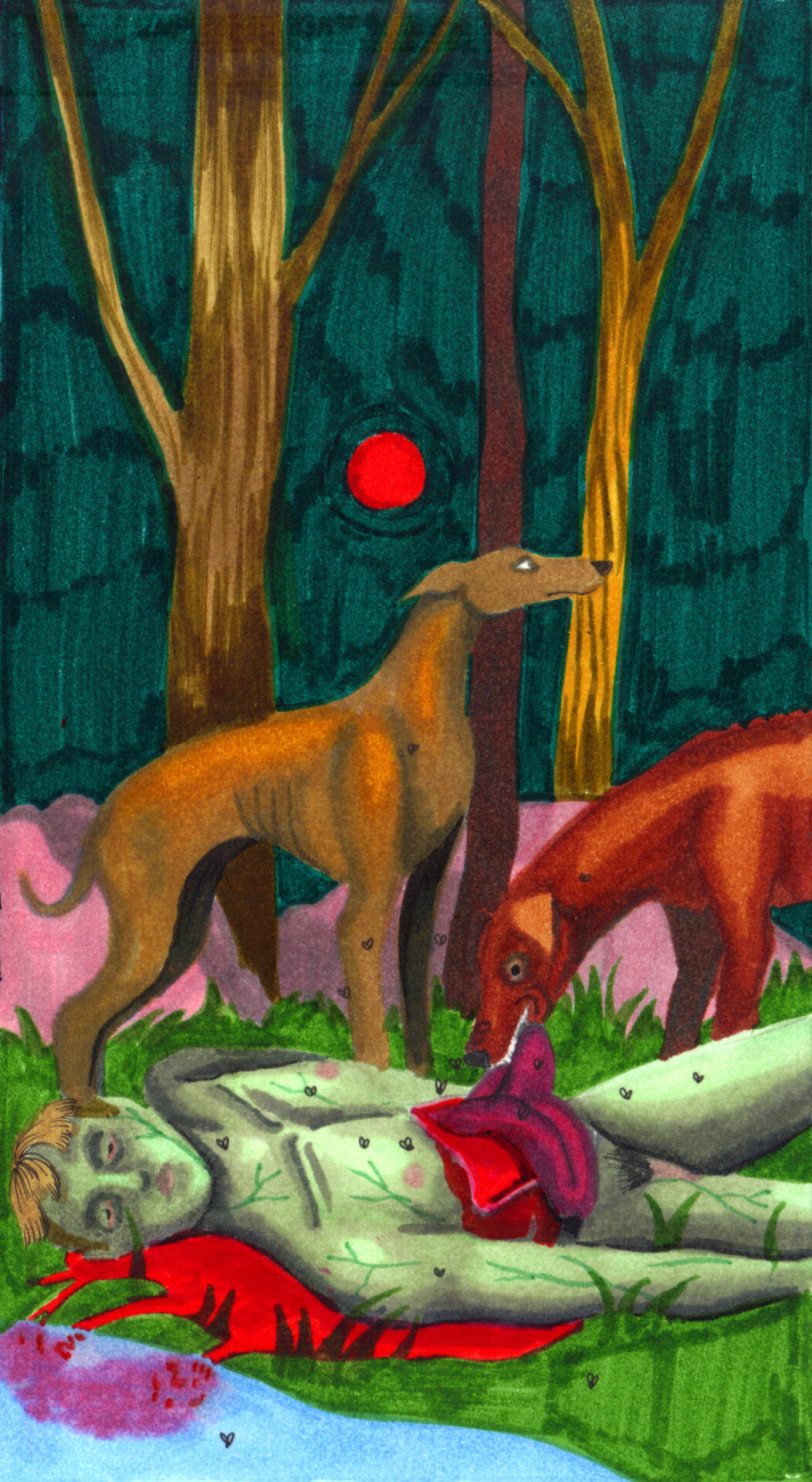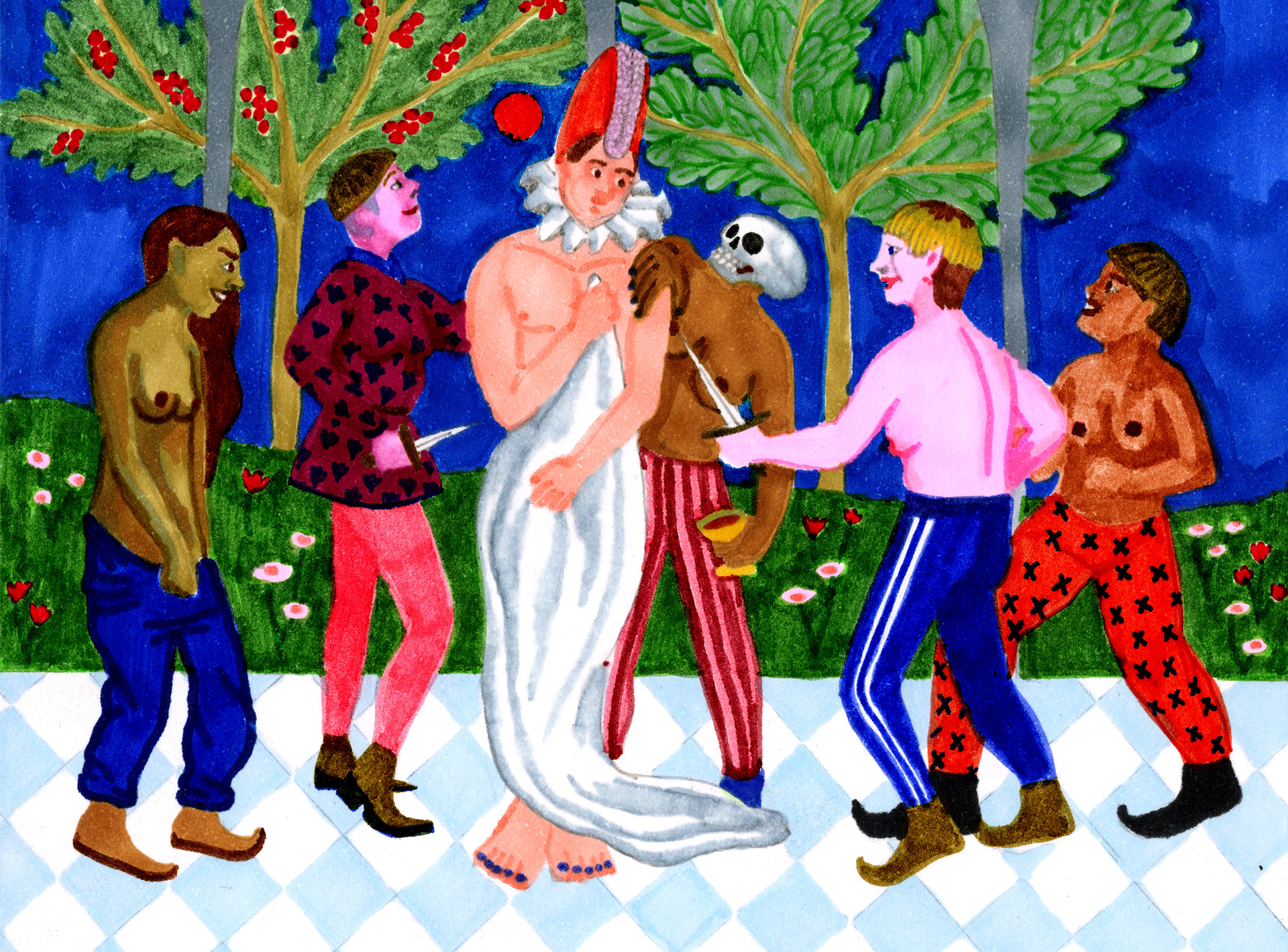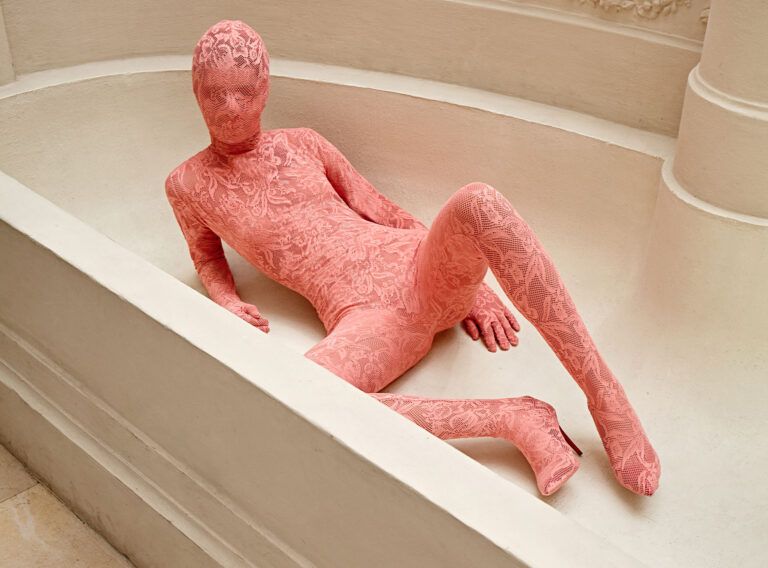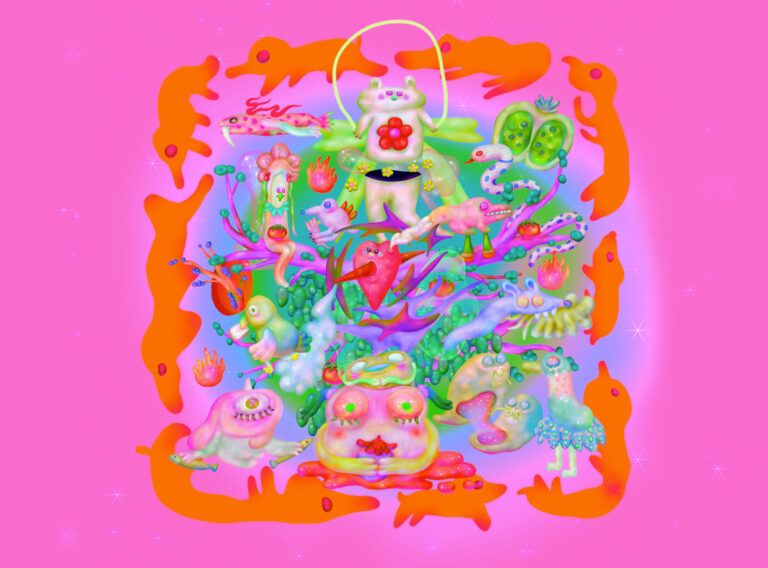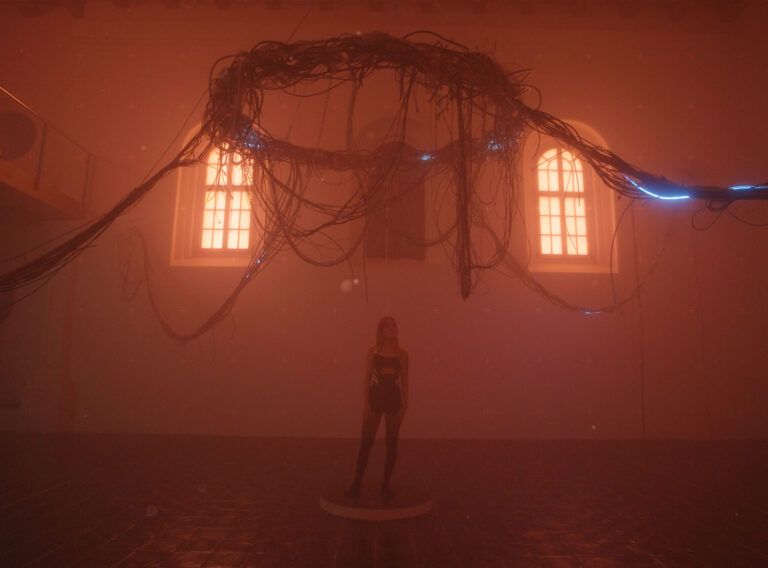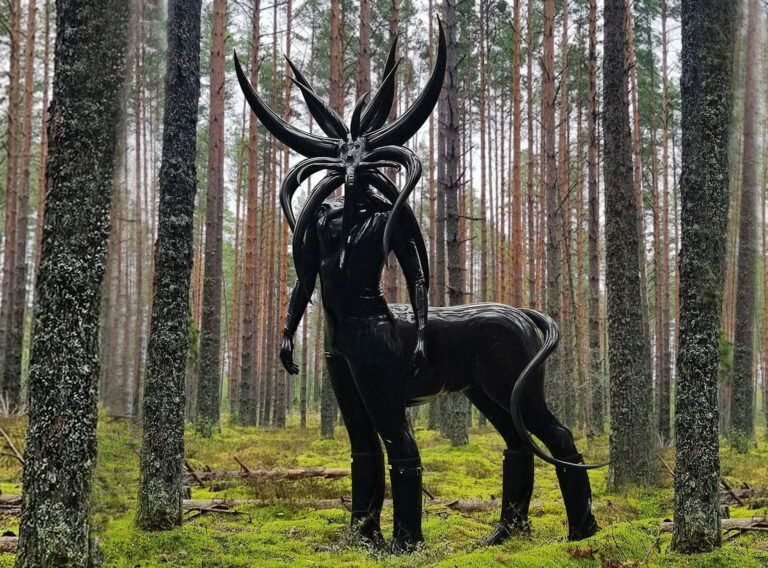Let’s start with your home country. Is it, alongside its history, somehow reflected in your work?
I was born in the south of France and it’s true that this sometimes influences my work: I love to tell stories where pastis, stereotypical characters, JuL’s fans and women in flip-flops mix together.
Where do you source the inspiration for your artworks?
I’m influenced by the world of illustration and independent comics, cinema (horror, thriller, trash and independent films), all forms of art in general (painting, 3D, sculpture, music… ) but also pop culture and, of course, the phantasmagorical world of the Middle Ages.
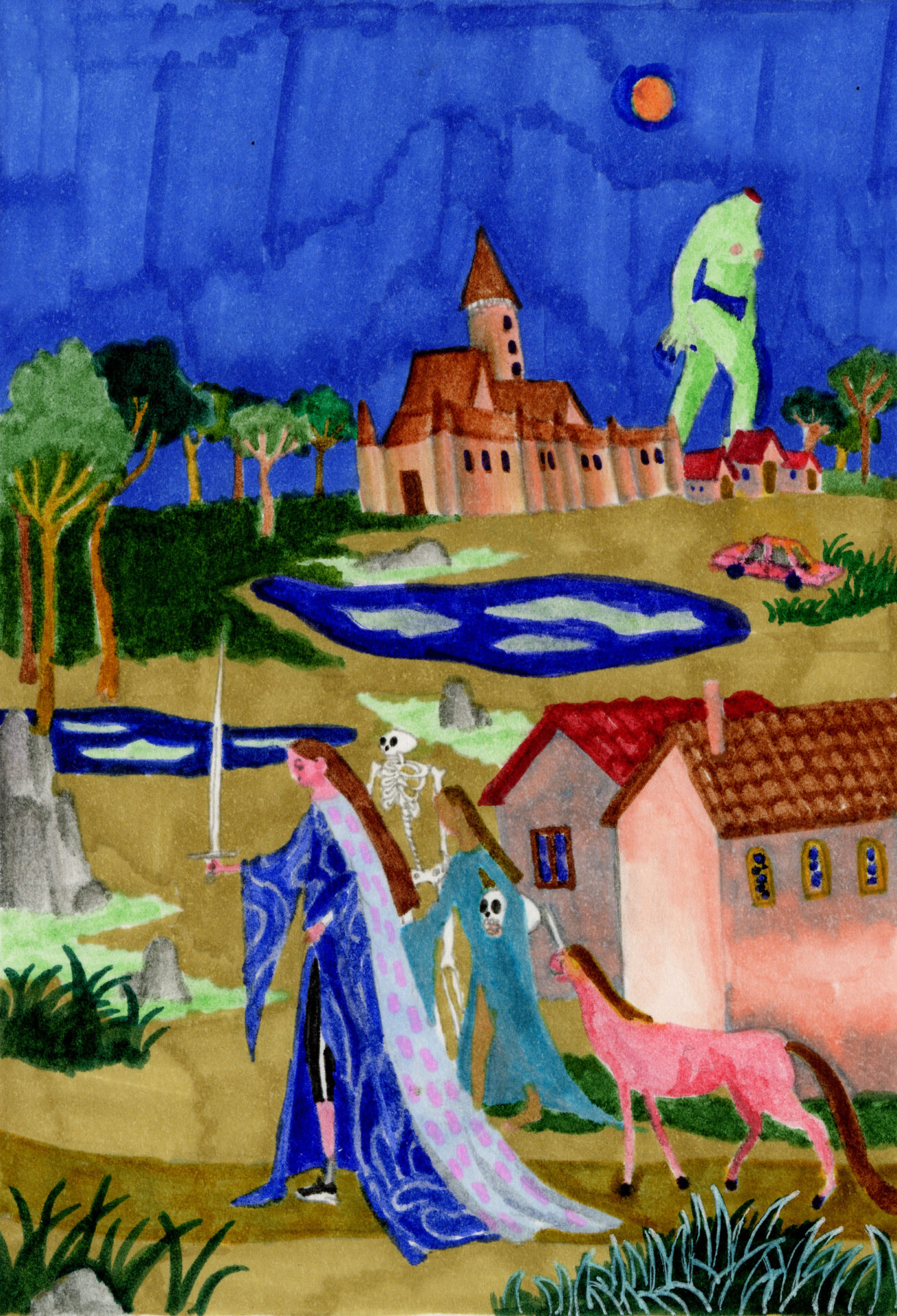
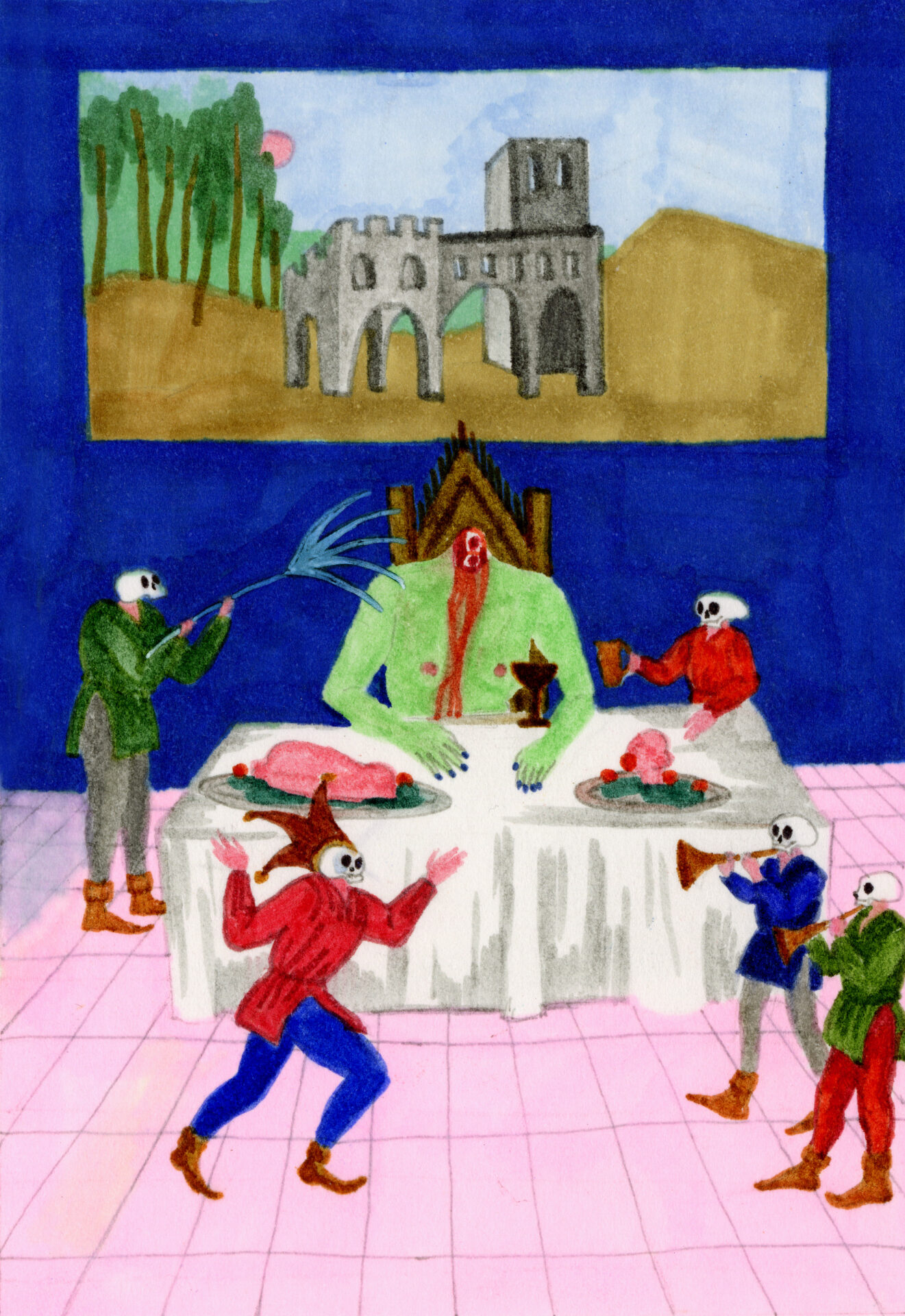
Do you feel there is now a kind of a resurrection of the medieval theme, regarding the aesthetic, philosophy, myths, etc.?
Yes, indeed. I have been noticing for several years now that many of us [artists] are seeing our work becoming more and more imbued with medieval codes, imagery and stories.
How would you define your style and what technique(s) do you use the most?
My style is in line with the current trends in illustration and contemporary comics. I like to mix colourful drawings, a childlike style and trashy themes like zoophilia or murder.
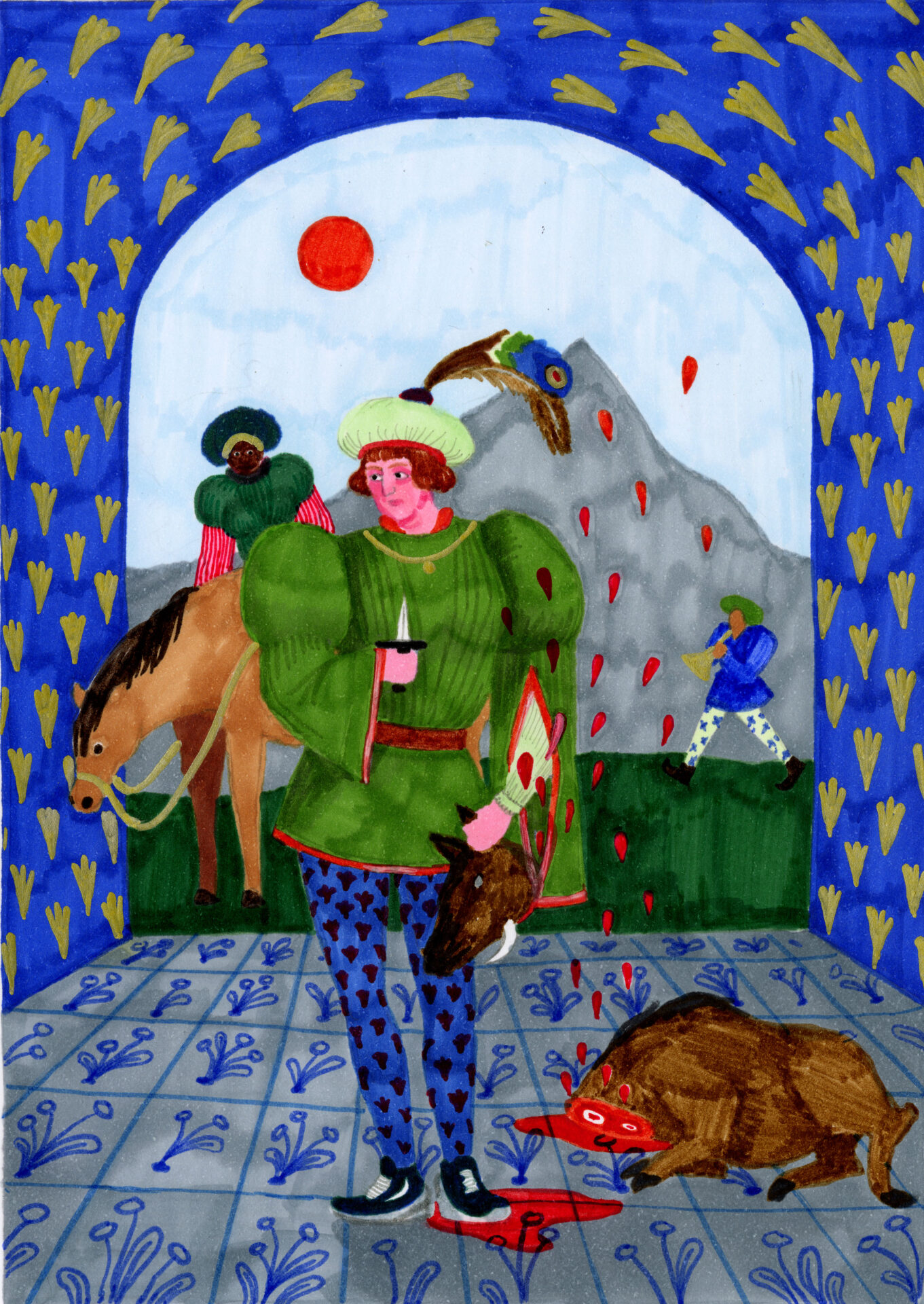
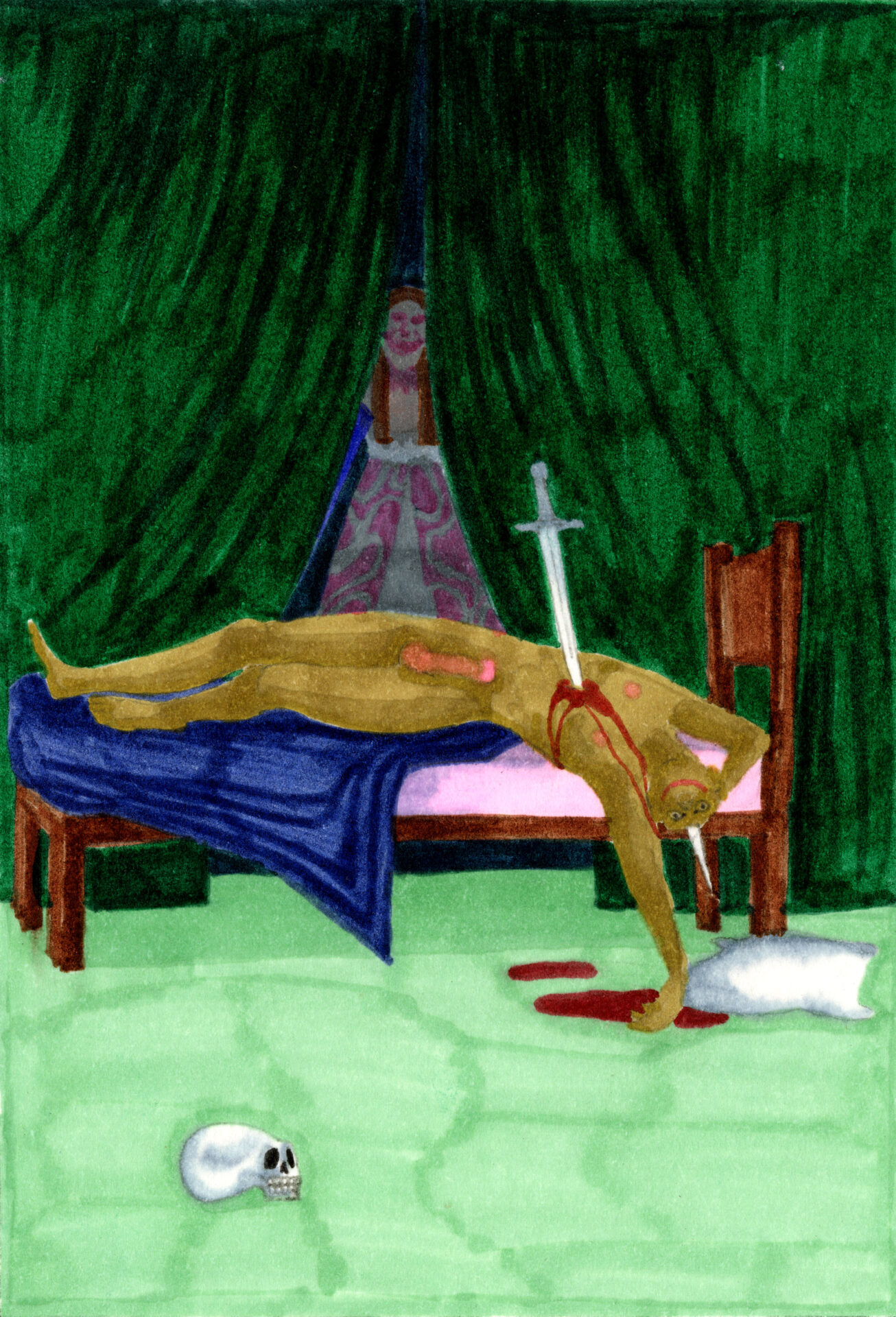
Imagine you are a fortune teller. What is your prediction for the art world’s upcoming years?
I think that techniques will evolve more and more with technological advances and media such as 3D or virtual reality, and digital drawing will be found increasingly in museums. In addition, art can move away from institutions such as galleries, art schools and publishing houses that, for some artists, can be obstacles on the path to creativity and visibility. Social networks, self-publishing and growing artists’ collectives will take their place.
If you could pick one medieval weapon – what would it be and why?
I think my favorite weapon is the dagger. It is a discreet weapon that can be hidden, it is used as the last resort and can also be used as a knife when you have to make a good toasted bread with paté.
Is there any repetitive theme, tale or story that appears in your artwork?
In my work, we often find themes such as deviances (sexual or not), murder, weirdos and secrets. Most of the visuals presented [in this article] are from one of my projects called “La Grande Morte”. These drawings are supposed to be vestiges of an ingrained religion in an invented matriarchal society. The goal is to push the spectators to question themselves about the role of the founding myths in our existing societies. The works are very much inspired by medieval imagery but contrast is created by references to pop culture (sneakers, jogging… ) and the use of kids’ felt pens.
Are there any new projects of yours coming this year?
This year, I would like to finish a smartphone game that I am making in collaboration with a friend. I would also like to finish my comic book project and finally create many and many fanzines.
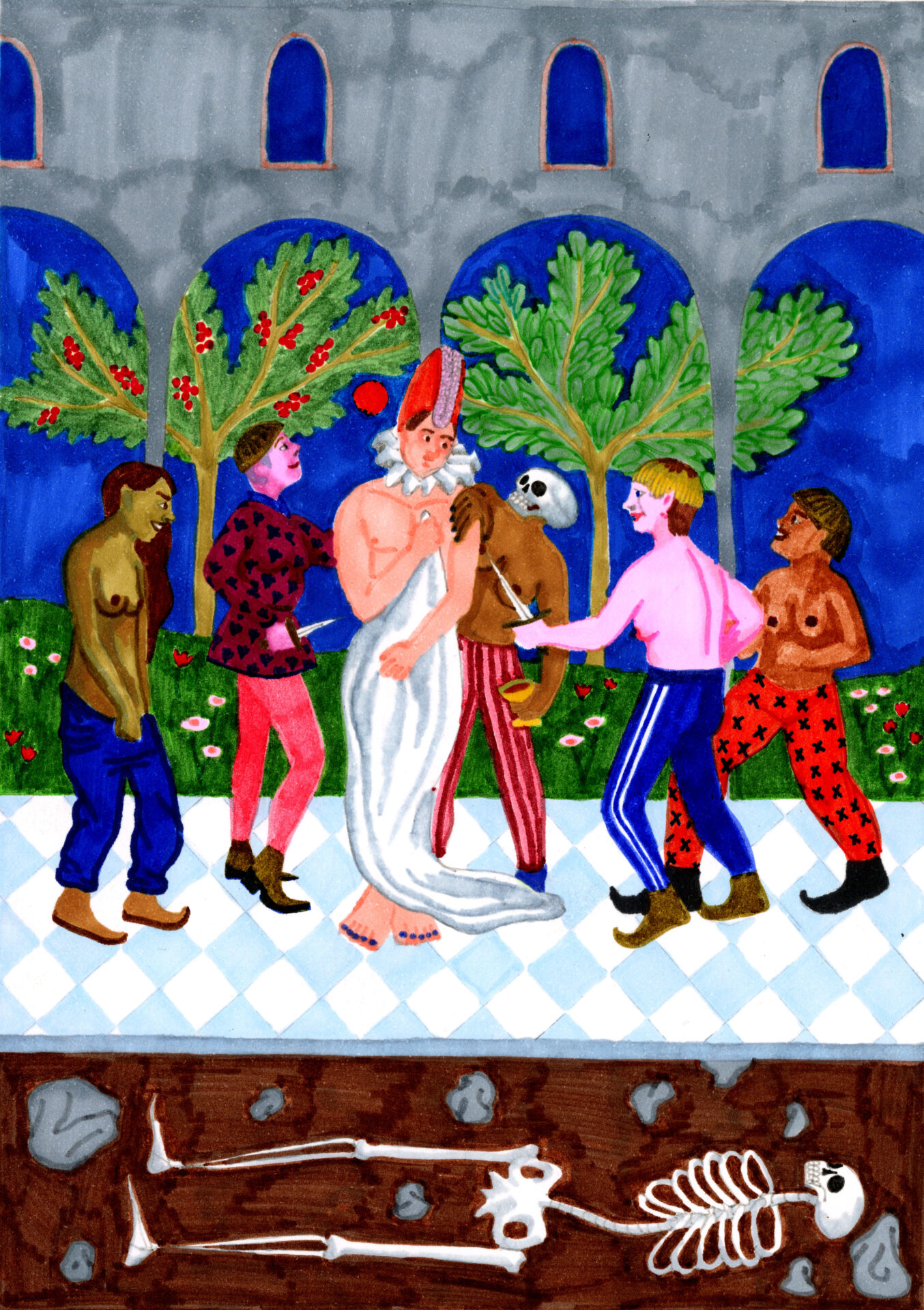
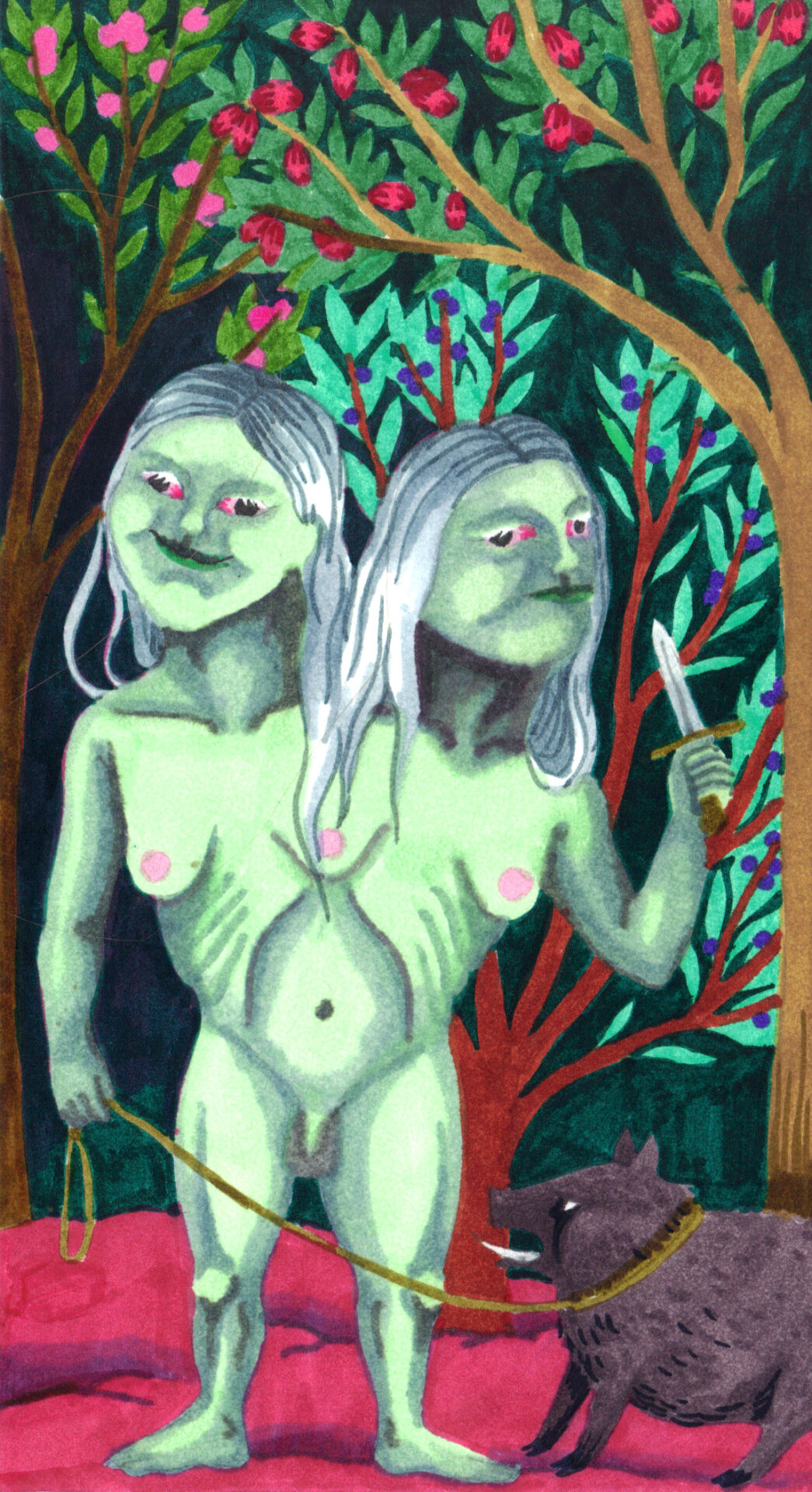

BIO / Louisa Vahdat was born in Carpentras (France) in 1996. She studied illustration at the Académie des Beaux-Arts in Liège, Belgium, and she won the first prize “Jeunes Talents” in Angoulême in 2018. She got her Master of Illustration title in September 2020 and is now doing an internship at the Dernier Cri in Marseille, France, where she drinks a lot of pastis.

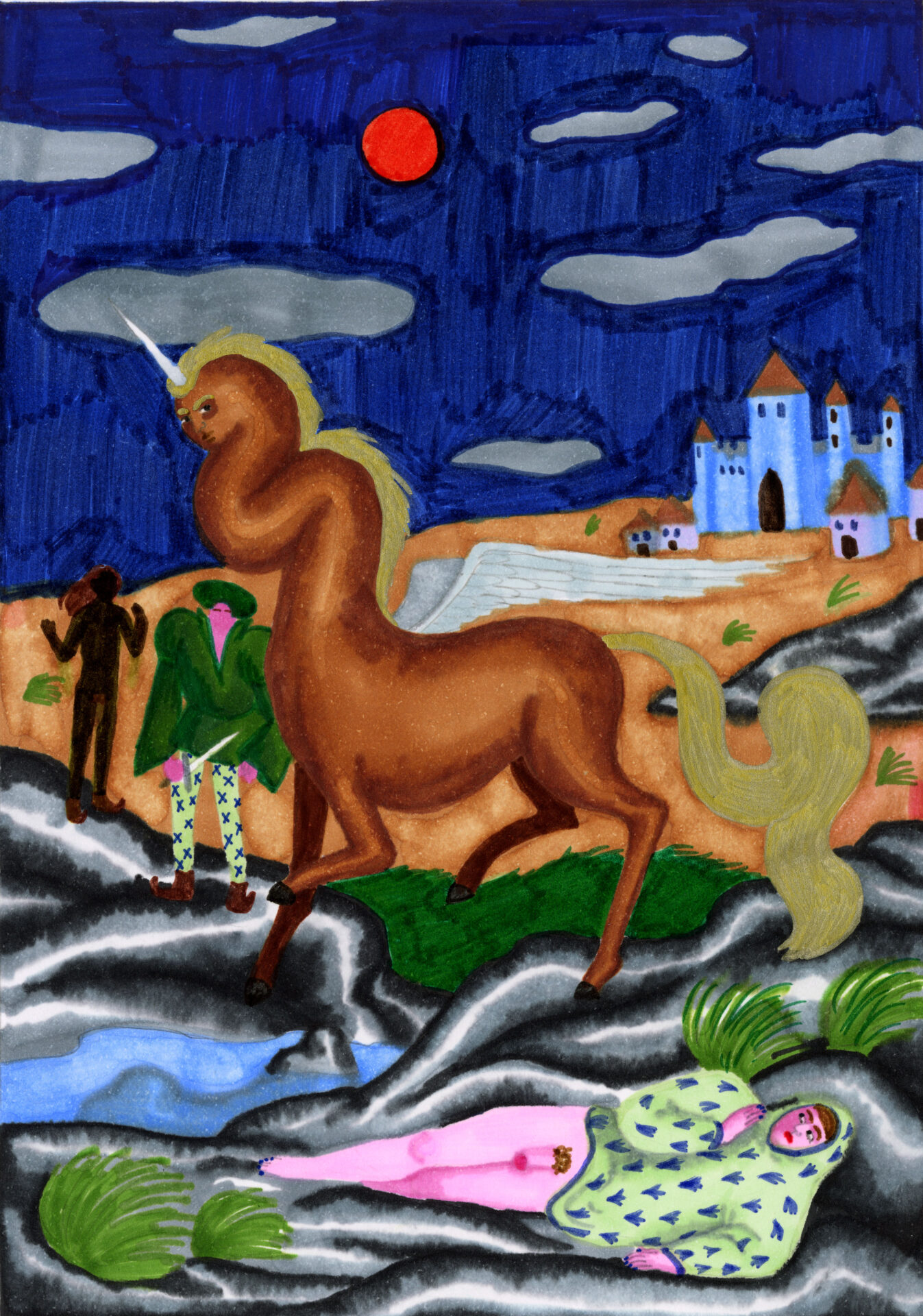
CREDITS
Artworks / Louisa Vahdat @elbehemot
Interview / Markéta Kosinová
